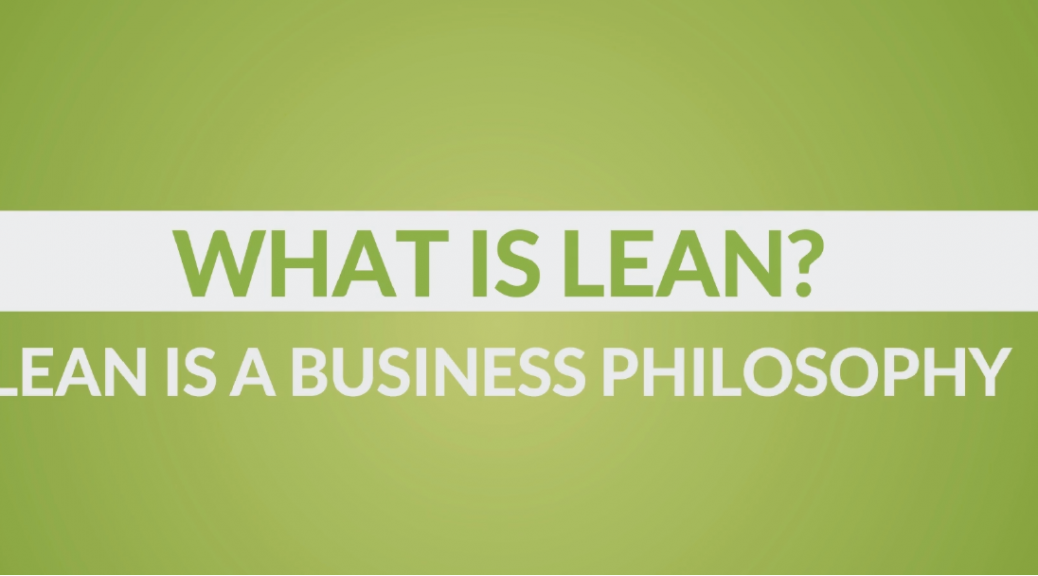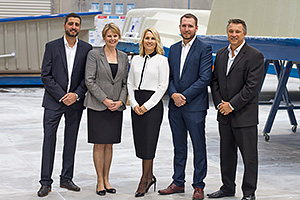Click to enter full screen mode.


Click to enter full screen mode.

Click to enter full screen mode.

In July, Tesla and its owner Elon Musk announced that it is building the world’s largest lithium-ion battery in South Australia — an installation 60 per cent larger than any other large-scale battery energy storage system on the planet.
In partnership with the South Australian government and French renewables company Neoen, alongside the third stage of the Hornsdale Wind Farm, the PowerPack battery farm will top 100 megawatts of capacity and provide 129 megawatt-hours of energy generation to the region — load balancing the state’s renewable energy generation and allowing emergency back-up power if a shortfall in energy production is predicted.
According to Musk, the battery will keep the lights on in South Australia. This statement is an increasingly important one as it comes at a time where the state has struggled with reliable energy generation and recently suffered from a statewide blackout caused by a 50-year storm last September.
Tesla has detailed its planned development in a recent blog post: “Tesla Powerpack will charge using renewable energy from the Hornsdale Wind Farm and then deliver electricity during peak hours to help maintain the reliable operation of South Australia’s electrical infrastructure. The Tesla Powerpack system will further transform the state’s movement towards renewable energy and see an advancement of a resilient and modern grid.”
In terms of gains in efficiency, the power that this innovative piece of technology has to sustainably and consistently power an entire state is extraordinary. However, while the technology itself may be new and exciting, the processes that Musk and his team will use to deliver them will still need to employ tried and tested Continuous Improvement techniques in order to fulfil the promise of 100 days from contract signature to project completion.
Both Musk and Tesla have a lot riding on this promise. For one, if the project isn’t delivered it will be free for the South Australian government. Secondly, if successful, Tesla stands to cement its reputation as a provider of technologies that can deliver manufacturing into the future, both cheaper and more sustainably.
Tesla has previously claimed it is able to drive down the per kilowatt hour cost of its battery pack by more than 30 per cent by “using economies of scale, innovative manufacturing, reduction of waste, and the simple optimisation of locating most manufacturing process under one roof”.
Breaking this key statement down, it is a little easier to surmise how Tesla is able to make sure a brash promise of completion in 100 days; Musk is placing his confidence in the use of established Lean and Continuous Improvement principles.
When Tesla mentioned ‘economies of scale’ they are referring to when more units of a good or a service can be produced on a larger scale, with (on average) fewer input costs. By following this key principle of lean production, Tesla will be able to apply this time based management approach to its battery production, presumably by repurposing already existing technologies it owns and produces regularly to construct the new, mega-sized lithium-ion battery.
On the surface, the Tesla Way is to go fast and hope that genius and adrenaline can compensate for a perceived lack stability. But according to Musk, ‘innovative manufacturing’ techniques are essential to Tesla rising to the ongoing challenges and opportunities of production in the technological. While these innovative techniques include the practical side of manufacturing including the reduction of cost per unit, its also a reference to how Musk and Tesla approach manufacturing as an overall idea. They are creating an alternate business model – and an alternate business ecosystem – that allows more control over the entire process from ideation to creation. This includes optimising space and man power by locating the entire manufacturing process under one roof, using one set of principles employed and understood by the entire workforce of Tesla.
The reduction of waste is not only a pivotal ongoing lean principle for traditional manufacturing, it is an integral part of Tesla’s business model for future industries and innovations. The car company worked closely with StopWaste’s Use Reusables program to switch to reusable windshield racks, a project that eliminates about 100 tons of cardboard waste a year. Since the new racks hold numerous windshields and can be worked straight from the line, they have improved the overall efficiency of Tesla’s manufacturing process. The car company also has an excellent recycling and composting program and diverts 79% of their waste from the landfill.
To find out how Lean and Continuous Improvement can be applied to your business, call 1300 667 099.

The viability of Australia’s manufacturing sector is going to depend on finding ways to increase productivity, improve international competitiveness and eliminate waste. Lean Manufacturing has become a way for Australian companies to remain competitive.
Manufacturing accounts for 6.8% of the economy and employs more than three times as many people as the mining sector. Government policy and media commentary has tended to focus on bailouts for large manufacturers, rather than reform initiatives aimed at improving operational efficiency.
One company driving change in this sector and producing positive results is Think Perform. Think Perform is part of the Thrive Alliance group of companies and a certified provider of Lean, Continuous Improvement and Operational Excellence training. Unlike most other RTOs, which simply deliver off-the-shelf training courses, Think Perform immerses itself within a business, identifies inefficiencies and then develops and implements a program to increase productivity.
For family-owned WA-based swimming pool manufacturer, Aquatic Leisure Technologies (ALT), Think Perform underpinned a wholesale transformation of its operations. ALT is one of Australia’s largest manufacturers of fiberglass pools and had been producing them in much the same way for the last forty years since the business started. With increasing competition from manufacturers in Asia and other countries, as well as concrete pool makers, ALT knew it needed to change and change quickly. ALT had even considered shifting manufacturing offshore to remain competitive, but as a family owned business it wanted to keep producing pools in Western Australia.
The company was familiar with so-called “Lean” management, which is perhaps best associated with Toyota’s production system. Lean management is about delivering quality goods and services at the best possible prices as quickly and efficiently as possible by eliminating waste, smoothing out production issues and empowering workers.
ALT built its new factory with Lean manufacturing principles in mind and partnered with Think Perform to drive change at every level of the business. When ALT came together with Think Perform it had already started on its Lean manufacturing journey with the launch of ‘The ALT Way – Business Excellence Initiative.’ ALT had already been exporting pools for more than 30 years, but the transformation program established the foundations for ALT for further expansion in overseas markets.
Importantly, reform at ALT would not have been possible without the Chamber of Commerce and Industry of Western Australia (CCIWA) and the role it played in convincing State and Federal Governments of the need to continue supporting these types of industry transformation programs. With on-going Government support for initiatives aimed at driving operational efficiency, both CCIWA and ALT believe Australia’s manufacturing industry can prosper and once again be internationally competitive.
It has been unfortunate for the entire training industry, as well as the beneficiaries of these programs, that a few unscrupulous operators have tarnished the reputation of the sector. However, in line with results being displayed from clients such as ALT, there are providers such as Think Perform who are delivering quality outcomes. Countries such as South Korea and Japan have demonstrated that even in a high labour cost environment, they can establish a competitive advantage in manufacturing through increased efficiency and productivity.
Click here to download a free Lean Management ebook or click here to contact Think Perform and discover how Lean Management and Continuous Improvement Training can be of benefit to your staff and business.
When we talk about thinking Lean, we are not talking about a traditional rationalisation tactic, a traditional cost reduction program or a trendy business coaching fad based on temporarily popular principles. With Lean principles we are enacting a positive way of thinking and acting that allows profitable choices to be implemented across the entire organisation.
In this process of positive implementation and enacting, there are pivotal principles, tools and methodologies that Lean-thinking organisations are implementing to get the best results.
Focusing on Lean principles and tools will direct us towards a plethora of resources Lean thinking organisations currently use to improve their processes and eliminate waste.
While the accepted five-step thought process for guiding the implementation of Lean principles and practices is relatively easy to remember, achieving it is not always easy or straightforward
By following the Five Lean Principles in a continuous flow from one to five and back again, the result is the introduction and maintenance of a strong methodology based on an overriding organisational strategy to constantly and consistently deliver the best results to the customer. With a view to identify, redirect flow and revisit for further improvement, the Lean methodology is one that is never complete, and instead becomes a way of being for the organisation and all who work within it.
While having a solid concept of the Lean Principles and methodologies behind them of continuous improvement and respect for the customer is one thing, it is an entirely different matter to put these principles and methodologies into practice with reliable and comprehensive tools.
Of all the Lean Tools that are being implemented by Lean thinking organisations, there are some that stand out as being particularly helpful in directing the flow from each Lean Principle to the next.
The first point of reference for the overriding Lean principles is to recognise the actions or process that adds value for the end customer, and what actions don’t. Identifying both the valuing adding action and the non-value adding actions that contribute to waste is the principle point moving forward with Lean thinking.
To effectively identity the value we are providing our Customers we can firstly identify the Waste and how we can reduce this waste to improve our value to the Customer, while also providing a safer workplace as many wastes are also hazards within our workplaces.
In Lean, the Value Stream is the entire set of activities across the organisation involved in delivering a service or product. By identifying the end-to-end process that delivers the product or service to a customer, break down or stalls in this process can be identified and better rectified
This is the stage where we focus on what the end-to-end process that delivers the product or service to a customer is.
Upon examining the Value Stream from beginning to end, some Lean thinkers may find that only a small percentage of efforts directly impact the end result that the customers interacts with. Eliminating the waste in this flow and instead replacing it with valuable actions or simplified processes is key with this Lean principle
At this point of the Principle flow, the Lean thinking organisation will be focused on reducing the slack hiding within the existing processes; this is where 5S comes in as a useful tool. The five steps of 5S are designed to identify where flow can be improved between processes and between people:
Click here to download the handy 5S Poster.
Understanding the nature of the customer’s demand for the product or service is key to establishing a process that responds to this as opposed to works against it
This is the stage of the process when you need to define what material is required and when you want it available or delivered. Too much product at the workplace has the potential to restrict access and introduce safety issues, too little product and you process in in danger of being stopped awaiting for materials.
The pursuit of perfection begins and continues with the comprehension of pull and the directing flow toward the betterment of the overall customer experience. The more dedication and focused the pursuit is, the more layers of waste will be uncovered and converted into a smoother, more continuous flow.
Now you’ve reached this stage, you’ve addressed the big issues, you’ve made permanent change based on KPI data you have collected, now you need to spend more time at the process. You cannot make an assessment on any process without being there and seeing what is happening, without understanding any frustrations that may be in the workplace.
Talk to the people, ask them how things are going, what are their issues and ideas, your people need to feel they are engaged and valued by you, and that they are a significant part of the improvement process. Avoid the Yes/No response questions like “Is everything okay?”, use open questions such as “I noticed you were having problems with that part during assembly, what are the issues?” and “How can we make it easier for you?”
Ensure you have “Regular Meaningful Conversations about things that matter”, to help you identify the potential issues and concerns before they become costly repairs and fixes, or worse, customer or consumer complaints.
Visualise your problems on a board or a chart, and set plans in place to implement effective permanent solutions.
At the heart of these Lean principles and the tools that support them, there is always a primary focus on the customer experience and the improvement of this through the elimination of waste, the simplification of process and the implementation of a smooth flow of work toward the ongoing goal of continuous improvement.